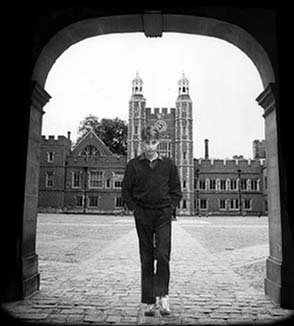
Eton College
Introduction
Eton College was established in 1440 in Windsor, England- just minutes away from Buckingham Palace. It is the former school of many famous British men and the today school of Prince William and the future college of Prince Harry.
Attendents of Eton College in the past have included King Henry VI, Sir Henry Wolton, Thomas Gray, Horace Walpole, Richard West, Thomas Ashton, Paul Watkins, Dr. Stephen Wolfram, The Duke of Wellington, The Earl of Chatham, Earl Spencer, and S.P. Sumtow are among the few.
When a young man enters Eton, he is usually no older than thirteen. He enters the “F” block, which is the first year. He moves into the “E”, “D”, “C” and finally “B” block, then he continues his education at univeristy, although many take a year off for their “gap year.”
Eton maintains a very rigid timeline for it’s students. The school’s timetable depends on which half of the year is taking place. The untumn term starts at 7:30 am for 1st school, or period, as it’s called in U.S. schools. Then at 8:15 am, the students stop for breakfast. At 9:20am, there is a brief service in the Chapel. At 9:40 am, 2nd school begins. There is a 10:30 am break; then at 10:55 am, 3rd school commences; 4th school begins at 11:55 am. Lunch is served at 1 pm only at Eton, and it is called dinner. There is time for study after the mean then at 3:30 pm, 5th school beings. In keeping with English tradition, tea is served at 4:15 pm. At 5pm, 6th school begins. A study period runs from 7:45 pm until 8:20, when supper is served. House prayers are given during the meal at 8:30. After eating, the students return to their rooms for a study period that lasts until 10 pm, when it’s lights out. In winter, spring and summer, the hours are slightly modified, i.e., teatime for the summer is at 4:45 pm or 5:30 pm, depending on whether or not it is a whole school day.
.

Young men, at the age of fourteen or fifteen, go through a rather difficult transition as a result of changes in their hormones or glands. This is called puberty and for some boys, this is a very difficult time in their lives. At Eton, the house master’s aim is to coax a boy through this difficult phase. This is the point at which he hates to rules and regulations of boarding-school-life the most. Young boys at this time have the urge to get out into the world, find out about things and sample them. These are of course, good, normal, heathly urges.
It is at this time that these young men tend to perceive that their lives at Eton has a vestige of the past. They are usually quite bored with the four walls of the rooms and the view from their windows.
The house master and tutors understand the conflict of loyalties that surface during this period; they are aware of the fustrations of these boys. He may be fifteen or sixteen, an ag eat which most young men in England are leaving school, starting to earn their living and to enjoy a free social life which offers a marked contrast to that of the boy confined in a boarding school.

William with friends on the grounds of Eton College.
Etonians are not deaf or blind and they are well aware of the tremendous previsions made nowadays for young people to enjoy themselves. So, far from feeling a snobbish aloofnesss, what they often want is to indentify themselves with the mass of young people dressing and often talking to them. The big divison nowadays is not so much of class, as of age. That is why Etonians in their black and white tailsuits are on such friendly terms with the black leather “rockers” whose rendezvous is the Cellar Cafe just over Windsor Bridge near the school.
At the same time as he understands all this, the tutor has to be loyal to school rules and to see that the restictions are respected and obeyed. You can’t run a boarding school without rules, and the point of many of the rules is not apparent to the young.
For Americans, pretigious Eton College is equivalent to an exclusive private high school costing approximately $25,000 per term plus the additional cost of uniforms at $3,000.

Prince William outside Eton College
© 1997, 1998, 1999, The Wills Center